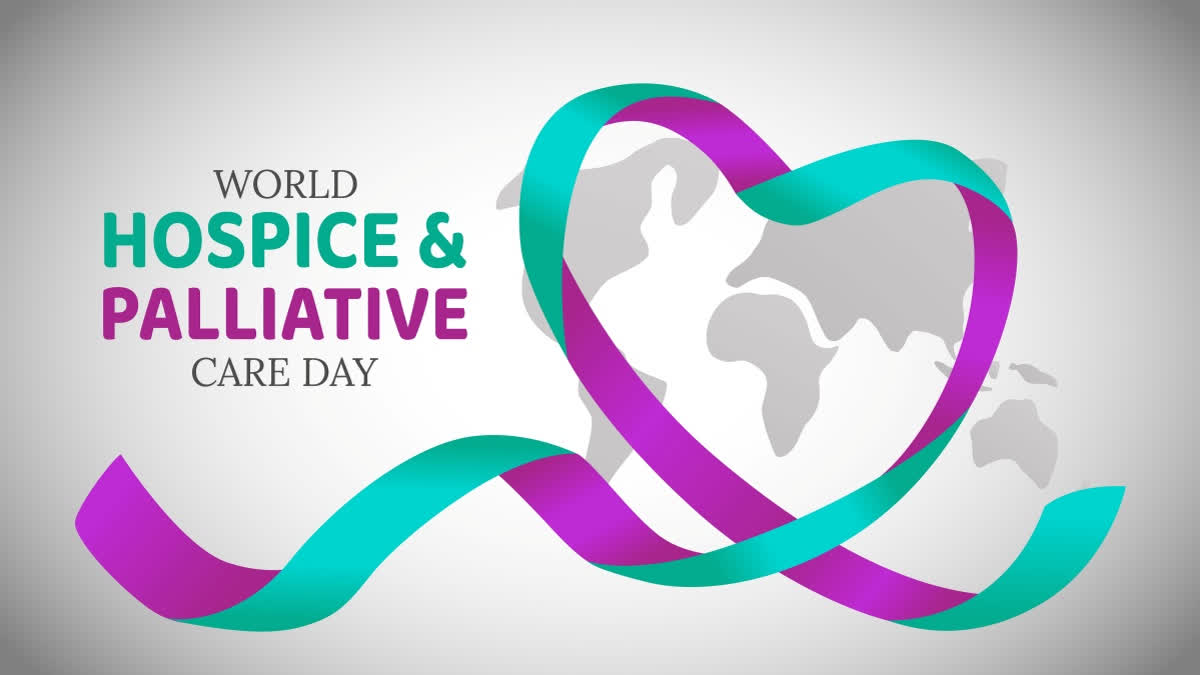Hyderabad: Every year, the World Hospice and Palliative Care Day is observed on every second Saturday of October. This year, World Hospice and Palliative Care Day (WHPCD) is being observed on October 12.
Many hospice and palliative care organisations hold a variety of events on this day. These events focus on the importance of hospice and palliative care. Events include webinars, live discussions, film festivals, concerts, walks, community breakfasts, and conferences.
History of world hospice and palliative care day:
World Hospice and Palliative Care Day (WHPCD) was first celebrated in 2005 by the Worldwide Hospice Palliative Care Alliance (WHPCA). The day is celebrated to raise awareness and advocate for improved access to hospice and palliative care.
Theme of the year:
The WHPCD theme for 2024 is 'Ten Year’s since the Resolution: How are we doing?'. The year 2024 marks 10 years since the World Health Assembly (WHO’s Governing Body) passed the only stand-alone resolution on palliative care, calling for all countries to "strengthen palliative care as a component of comprehensive care throughout the life course." This is what inspired the theme for 2024.
Purpose of the day:
The goal of WHPCD is to increase awareness and support for hospice and palliative care services globally. To urge healthcare professionals, policymakers, and communities to support fair access to hospice and palliative care.
To emphasise the significance of hospice and palliative care, and the requirements of individuals with severe illnesses.
To raise money in order to provide support for hospice and palliative care services.
About Hospice and Palliative Care:
Palliative care: Palliative care is defined by the WHO as a method to raising the standard of living of patients who are experiencing difficulties related with terminal illnesses by preventing and alleviating suffering via timely detection, evaluation, and management of pain and other troubling psycho-social, and mental issues.
Palliative care can start at any stage of a severe illness, even while the patient is undergoing treatment. The goal of palliative care is to alleviate symptoms and enhance quality of life. A team consisting of doctors, nurses, counsellors, and social workers can offer this service.
Hospice care:
A particular form of end-of-life care is typically given to patients who have ceased treatment for their condition and are estimated to have six months or less to live. Hospice care may involve offerings like emotional and spiritual aid, pain management, and assistance with advanced care preparation. It is commonly offered by a group consisting of family members, visiting nurses, chaplains, and social workers.
Hospice care focuses on the patient and provides various services like pain relief, symptom management, emotional and spiritual assistance, support with daily tasks, and help for the patient's family.
Hospice care is most often given in the home. But for some people, being at home isn’t possible. So hospice care can also be given in a hospital, extended-care facility, or inpatient hospice.
Some of the most common medical conditions that often necessitate hospice or palliative care are:
- Cancer
- Kidney failure
- Heart failure
- Chronic lung disease
- Neurodegenerative diseases
Hospice and palliative care can offer numerous advantages to patients, their families, and caregivers, such as:
Enhanced quality of life: Patients and their loved ones may have an increased quality of life as they near the end of life. Patients might experience a greater sense of control and lower levels of depression and symptom burden.
Decreased hospital admissions: Hospice care can assist in lowering the number of hospital admissions and readmissions.
Caregiver assistance: Hospice care offers assistance to caregivers through physical and emotional support, as well as education, financial aid, and respite care.
Management of symptoms: Hospice care can assist with the management of pain and symptoms.
Discontinuing curative treatment: Hospice care emphasises cessation of efforts to cure the illness. Hospice services can assist patients and their loved ones in achieving a sense of closure.
Palliative care: Palliative care can be administered in different locations like hospitals, nursing facilities, and residences. If the palliative care team determines treatment is ineffective, hospice care may be offered instead, even if curative treatment continues.
Hospice and palliative care aim to enhance the quality of life and provide comfort to individuals dealing with serious illnesses.
Why have a World Hospice and Palliative Care Day?
Over 50 million people worldwide die annually, with about 60 per cent of them in need of hospice and palliative care, yet many are unable to receive these services.
Individuals with severe illnesses often face unnecessary or insufficiently treated pain, and they may lack the knowledge or capability to obtain palliative care services if they are accessible. Hospice and palliative care consider the complete individual and the impact of terminal illness on the person, their family, and their community.
Current status of Hospice and Palliative in India:
Hospice care facilities: India has a variety of hospice care facilities, such as hospitals, hospices, and non-governmental organizations (NGOs). The initial hospice in India, Shanti Avedna Sadan, was founded in Mumbai in 1986.
Palliative care services: There are 138 hospice and palliative care services spread across 16 Indian states and union territories, however, most states lack sufficient coverage.
Indian Association of Palliative Care: The IAPC has a team dedicated to advancing education and training in palliative care, known as the PPC working group.
In India, there are various options for hospice and palliative care, such as hospitals, non-profit groups, and hospice facilities: Alpha Palliative Care, Ganga Prem Hospice, Karunashraya, Tata Medical Centre, CanSupport, Jeevodaya Hospice for cancer patients.



